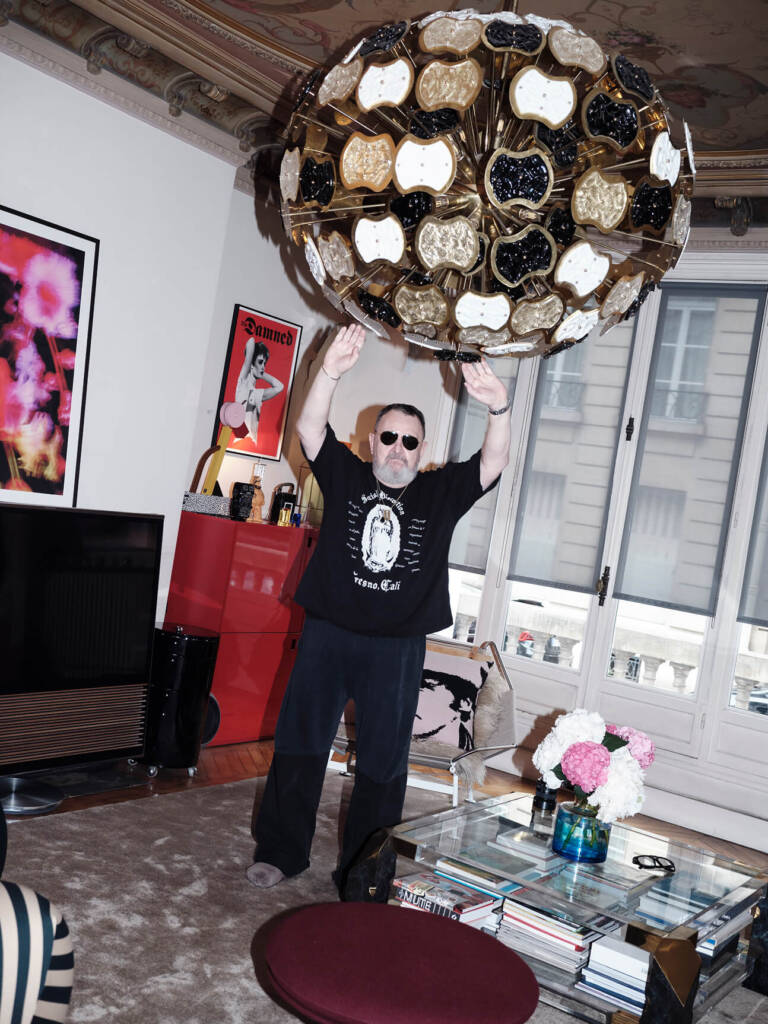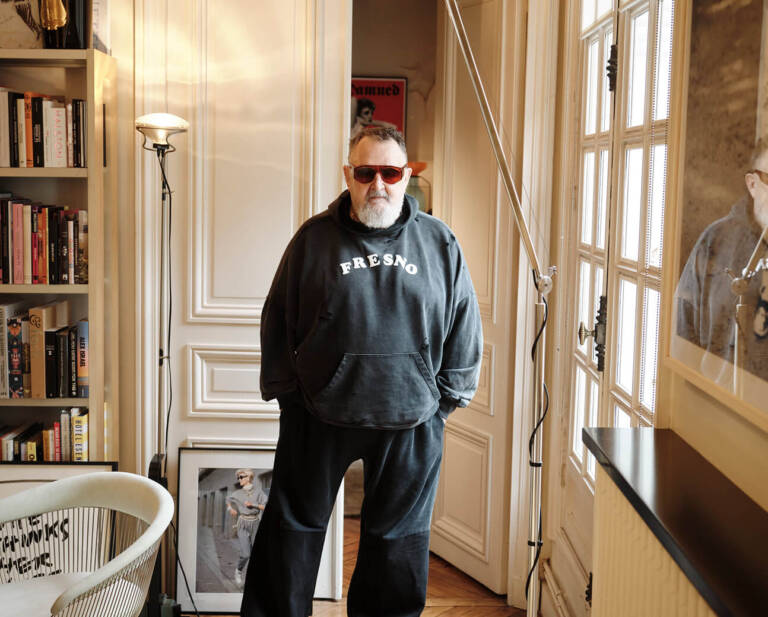

Michel Gaubert doesn’t just compose soundtracks, he constructs entire sonic universes. His mind functions like a supercharged computer with an immense music database; he can instantly identify the required mood and then communicate it effortlessly through sound. When words and visuals aren’t enough, music takes over-Gaubert’s medium of choice is capable of delivering a complete message with perfect clarity.
Gaubert is a renowned figure in both music and fashion, celebrated for his work as a DJ, musician, and sound designer. As one of fashion’s leading sound directors, Gaubert has crafted soundtracks for Christian Dior, Loewe, Balenciaga, Louis Vuitton, Dries van Noten, and Sacai. For many of these brands his soundtracks are as much a part of the brand’s identity as iconic monograms, silhouettes, and colour palettes. Having been a close collaborator of Karl Lagerfeld for three decades, Gaubert was the one to create soundscapes that mirrored the audacity of the designer’s vision-like the time he orchestrated a cosmic soundtrack for a runway set inside a life-sized space shuttle.
We visited Gaubert and his partner, Ryan Aguilar, at their home in Paris. Here, Gaubert shared his thoughts on the intertwined worlds of music and fashion, the connection between aural and visual experiences, and his perspective on the future of music in the age of AI.
hube: DJ, musician, sound designer, sound illustrator. How easy is it to move between roles in the musical space?
Michel Gaubert: I have several hats, of course. While I’m nota composer, I do collaborate with others incomposing and production. It’s a very naturaland organic process for me, deeply rooted inmy passion for music. I effortlessly transitionbetween these roles, never doubting myself. Everything stays within the same universe. I also have a strong affinity for visual imagery due to its powerful impact. However, when it comes to writing, that’s outside my comfort zone. For me, music and visuals are my comfortable area.
h: Music is perhaps the highest form of abstract art. It can seamlessly integrate with other creative forms. A soundtrack can be more interesting than the film itself, and a musical score better than the play. Is music always your top priority?
MG: Personally, music holds top priority in my life. I immerse myself in it every day. Whether it’s 15 minutes or 4 hours, or merely serving as background ambience, it’s a constant presence. When I watch a movie, I always pay attention to the music. Sometimes I hate it or it doesn’t bother me; other times, it’s amazing. For example, I watched Poor Things last night and thought the soundtrack was perfect, it seamlessly harmonised with the visuals. There’s nothing better for me than when music and visuals complement each other perfectly. The image enhances the music, making it stronger, and vice versa. This synergy is very important to me. It’s the same feeling whether you’re in a club or walking down the street.

